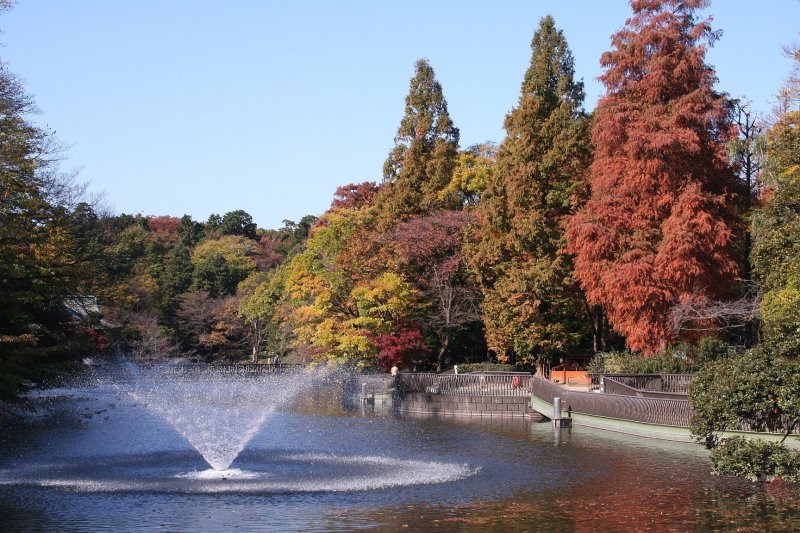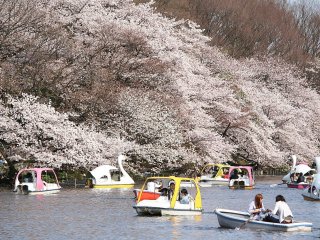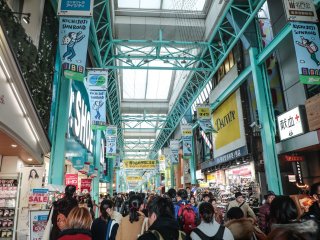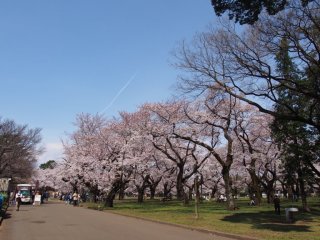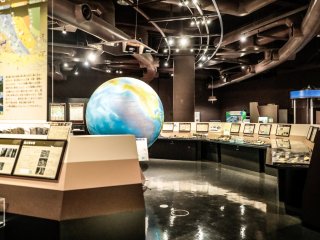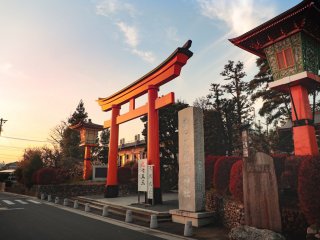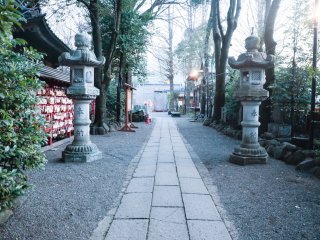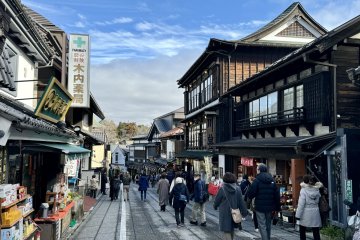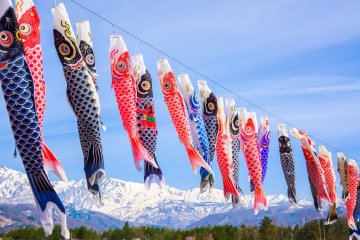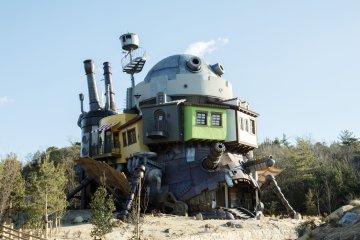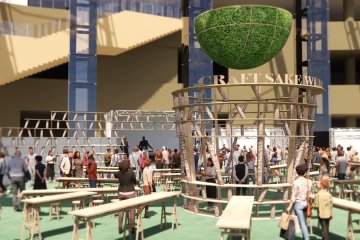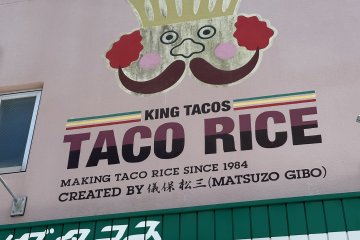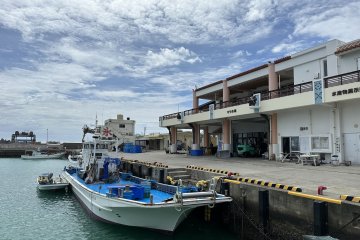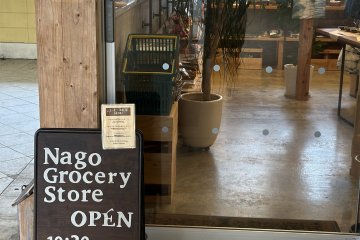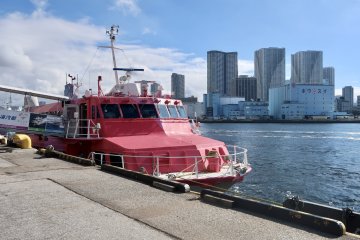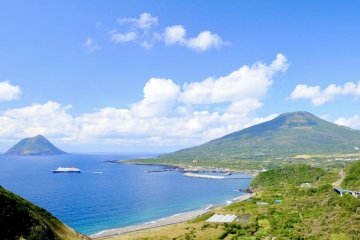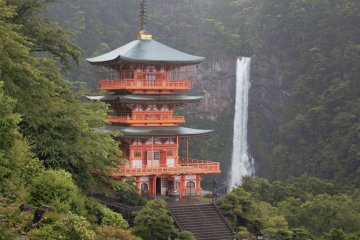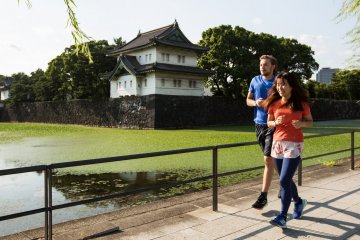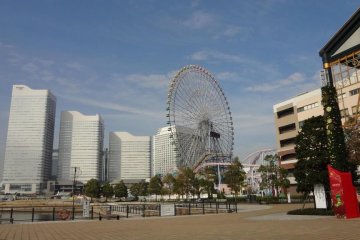A top ten list? It has been done. So this one goes to eleven. We have asked around and these are the top areas for visitors in Mitaka, Koganei, Musashino, and Nishi-tokyo, the most popular areas in the western side of Tokyo. From art to architecture, science to spirituality, western Tokyo has got a little bit of everything for every age without the huge crowds. So if you are in Tokyo as a solo visitor, coming with family, or out on an adventure with friends, check out these top eleven places to visit.
1. Inokashira Park
1
Arguably the most famous destination in the Musashino and Mitaka area, Inokashira Park is a full day experience. It’s your one-stop shop for entertainment, education, and experiencing Japan. Inokashira Park is home to the Inokashira Park Zoo, the Inokashira Benzaiten Shrine, the Inokashira Pond and boat pier, and of course, the famous Studio Ghibli Museum. The park is filled with entertainment for all ages and includes a sports center, a cafe, playground equipment, and live performers. One of the most well known Inokashira activities is the popular swan boats over the large lake area. Fun for a family outing, site-seeing , or a date with a special someone. Not only is there a lot to do, the park is well know for their cherry blossom viewing celebrations and beautiful fall colors.
Hours: open 24 hours - attraction times vary
Admissions: free- attractions prices vary and tickets for the Ghibli Museum must be bought in advance.
From Kichijoji Station: 5 min walk from the Park; or 1 minute train ride To Inokashira Koen Station; Bus: Take the Odakyu Bus and get off at the "Koen-iriguchi/Bunkaen-mae" stop
2. Kichijoji Sunroad
2
Located on the north side of Kichijoji Station is Kichijoji Sunroad, a popular shopping center for locals and visitors. With plenty of places to get omiyage (Japanese souvenirs) and a variety of restaurants and cafes, Kichijoji Sunroad is the perfect place for some shopping and dining in the Kichijoji area. Around Kichijoji Sunroad, you can also see events during different times of the year. Some of these include activities such as live music, seasonal Japanese festivals (matsuri), and market events featuring local goods and services.
Hours: open 24 hours - shops and restaurants times vary
Admissions: free
From Kichijoji Station: 1 min walk from the North Exit
3. Musashino Hachimangu Shrine
3
Located outside of Kichijoji Sunroad is the Musashino Hachimangu Shrine. This shrine is particularly important because of its strong connection and dedication to the guardian god Musashino. While this beautifully kept shrine sits in the busy Kichijoji/Musashino area, the shrine grounds are serene, respected, and well taken care of by visitors and volunteers. Daily prayer and seasonal festivals are held at the shrine. If you are lucky, you might have the opportunity to see a traditional Japanese wedding ceremony with bride and groom in kimono.
Hours: open until sundown
Admissions: free
From Kichijoji Station: 8 min walk from the North Exit
4. Harmonica Yokocho
4
Harmonica Yokocho, also known as Harmonica Alley, got its name because of the harmonica-like shape of the alleyway. Many small shops and Japanese restaurants and izakayas (Japanese-style bars) line up side by side in this popular night locale. Because each of the restaurants are so small, visitors can stop at different shops for one or two drinks, and move to another for food. It is a great way to meet locals or other visitors. Lit up with red lights and retro style, the Harmonica Yokocho is a fun and unique night out. There is a local challenge of seeing if you can stay in Harmonica Yokocho until sunrise. Up for the adventure?
Hours: 3:30pm-4am
Admissions: free
From Kichijoji Station: 3 min walk from the North Exit
5. Osawa No Sato
5
Osawa No Sato is a small park adjacent to the Nogawa River. It is a great for relaxing walk or a chance to view local gardens and wild flowers. Within this park, there is a little piece of important Mitaka history: the Shinguruma Waterwheel and Farmhouse. A guided tour of the late-Edo period historic farmhouse is available to the public. Visitors can learn about Japanese farm tools, the mill, and waterwheel. Although no longer in commission, the mill and waterwheel still work and are used to educate visitors and show the importance of the river in Japanese farm life.
Hours: 10:00am–4:00pm
Closed Wednesdays (Thursday in case of holidays) and New Year's Holiday (12/28 ~ 1/4)
Admissions: 100 yen (free for visitors 15 years old and younger)
From Mitaka Station: from the bus exit, take 52 Asahi-cho bus or 52 Kurumagaeshi-danchi bus, and get off at the Ryugenji stop. The farmhouse is a 5-minute walk from the bus stop
6. National Astronomical Observatory of Japan (NAOJ)
6
With the goal of “bringing benefits to society through astronomy public outreach”, The National Astronomical Observatory of Japan invites visitors to take a look at the universe at the Mitaka campus. This beautiful open campus is filled with historic buildings that stand side by side modern research and educational facilities. Admission is free to enter and guests are given passes and map information (available in multiple languages) at the check-in entrance gate. Visitors can explore facilities such as the 20-cm Telescope Dome, the 50-cm Telescope for Public Outreach, the Observatory History Museum, the Exhibition Room and during show times, the 4D2U Dome Theater. There are also more than 2,500 picture books available to browse related to stars, forests and more located in a storied building built in 1915.
Hours: 10:00am to 5:00pm (Last entry 4:30pm)
Closed New Year's Holiday (December 28th–January 4th) / Picture book house closed on Tuesdays
Admissions: free - guide books available in multiple languages; available at the entrance gate
From Musashi-sakai Station: from the South Exit- Odakyu bus (91) at the No.3 bus stop and get off at "Tenmondai Mae" bus stop.
7. Edo Tokyo Open Air Architectural Museum
7
Also known as the "Edo Tokyo Buildings Garden", The Edo Tokyo Open Air Architectural Museum has brought together many pieces of culturally valuable and historic buildings of Japan to Koganei City. Visitors can see a large variety of architecture from different eras of Japan – a unique opportunity to see several different styles in one location. All the buildings are well preserved and some are open for visitors to enter and see a little piece of Japanese architectural history on the inside. Filled with multilingual information and helpful volunteer staff, the Edo Tokyo Open Air Architectural Museum is easy to explore and interesting to learn about.
Hours: April–September:9:30am–5:30pm, October–March: 9:30 am–4:30pm (Last entry 30 minutes before closing time) Closed Mondays and New Year's Holiday.
Admissions: 400 yen
From Musashi-koganei station: from the bus exit Seibu bus at the No.2 or No. 3 bus stop and get off at "Koganei Park West Gate" bus stop. 5-minute walk through Koganei Park.
8. Koganei Park
8
For those who love sports, picnics, photography, and nature, Koganei Park is a popular place for visitors to Koganei City. It is also the second largest park in the greater Tokyo area. With its side open areas, the park is great for enjoying time with friends and family or for a quiet, solo afternoon of reading and relaxing. Visitors can also check out the sports complex, Japanese archery range, and a steam locomotive display. The park is especially popular in the spring for its cherry tree (sakura) garden and the plum tree (ume) forest. While spring is a beautiful time to visit, it is a charming park to visit throughout the year. It is also home to the famous Edo Tokyo Open Air Architectural Museum.
Hours: Open until sundown
Admissions: free
From Musashi-koganei station: From the bus exit take Seibu bus to the No.2 or No. 3 bus stop and get off at "Koganei Park West Gate" bus stop.
9. Tama Rokuto Science Center
9
The Tama Rokuto Science Center, an interactive science museum, is fun for children and adults to learn about science as well as Japanese flora and fauna. The center is broken into 5 exhibitions rooms and a planetarium. While some information is limited to English, there are plenty of helpful staff and plenty of things to see and do. One of the top features of this science center is the award winning planetarium with a spectacular star show. (Sorry, no photography is allowed inside the planetarium.) After all the fun, guest can take a rest in the cafe and checkout the souvenir shop.
Hours: 9:30am–5:00pm (last entry 16:00) Closed at Mondays, national holidays, New Year's Holiday (December 28 to January 3)
Admissions: ticket prices vary (based on ticket package) between 500 yen-1400 yen for adults, 200 yen–500 yen for children. http://www.tamarokuto.or.jp/english/
From Seibu Shinjuku Line Hana-koganei Station: north Exit, Hana Bus (Route North 4) for Tanashi Station to “Tamarokuto Kagakukan” stop, 6-minute walk)
10. Higashi Fushimi Inari Shrine
10
As one of the many Inari fox shrines of Japan, this one sits in the middle of Nishi-tokyo City. Its large torii gate and bright red color stand out in the cityscape. Modeled from the famous Fushimi Inari Shrine in Kyoto, this smaller scale version is a must see for those wanting a taste of the Kyoto experience in Tokyo. The temple celebrates Japanese festivals through out the year. Don’t forget to go behind the main area to see more of the red torii gates!
Hours: Open until sundown
Admissions: free
From Kichijoji Station: north exit, Kanto bus No.2 off at “Higashi Fushimi Inari Jinja mae” stop
11. Tanashi Shrine
11
This popular shrine known for its cherry blossom festivals, weddings, and sacred golden dragons, has made it a must-see site in the Nishi-tokyo City area. Since this shrine was formerly located on Miyayama, many of the styles and designs are preserved and displayed to represent from the area. This is also a popular place of prayer for locals. It was also the most damaged shrine after the large earthquake in March 2011 and has since been restored.
Hours: open until sundown
Admissions: free
From Tanashi Station: north exit , 6 minute walk
Getting there
1. Inokashira Park
5 minutes by foot from Kichijoji Station on the JR Chuo Line/Keio Inokashira Line. 1 minute by foot from Inokashira-koen Station on the Keio Inokashira Line
2. Kichijoji Sunroad
From Kichijoji Station: 1 min walk from the North Exit
3. Musashino Hachimangu Shrine
From Kichijoji Station: 8 min walk from the North Exit
4. Harmonica Yokocho
From Kichijoji Station: 3 min walk from the North Exit
5. Osawa no Sato
From Mitaka Station: From the bus exit, Take 52 Asahi-cho bus or 52 Kurumagaeshi-danchi bus, and get off at the Ryugenji stop. The farmhouse is a 5-minute walk from the bus stop
6. National Astronomical Observatory of Japan (NAOJ)
From Musashi-sakai Station: From the South Exit- Odakyu bus (91) at the No.3 bus stop and get off at "Tenmondai Mae" bus stop.
7. Edo Tokyo Open Air Architectural Museum
From Musashi-koganei station: From the bus exit Seibu bus at the No.2 or No. 3 bus stop and get off at "Koganei Park West Gate" bus stop. 5-minute walk through Koganei Park.
8. Koganei Park
From Musashi-koganei station: From the bus exit Seibu bus at the No.2 or No. 3 bus stop and get off at "Koganei Park West Gate" bus stop. 5-minute walk through Koganei Park.
9. Tama Rokuto Science Center
From Seibu Shinjuku Line Hana-koganei Station: North Exit, Hana Bus (Route North 4) for Tanashi Station to “Tamarokuto Kagakukan” stop, 6-minute walk)
10. Higashi Fushimi Inari Shrine
From Kichijoji Station: North exit, Kanto bus No.2 off at “Higashi Fushimi Inari Jinja mae” stop
11. Tanashi Shrine
From Tanashi Station: North Exit , 6 minute walk
Elle Harris @elle.harris
I'm Elle, a Seattle photographer living in Japan.

